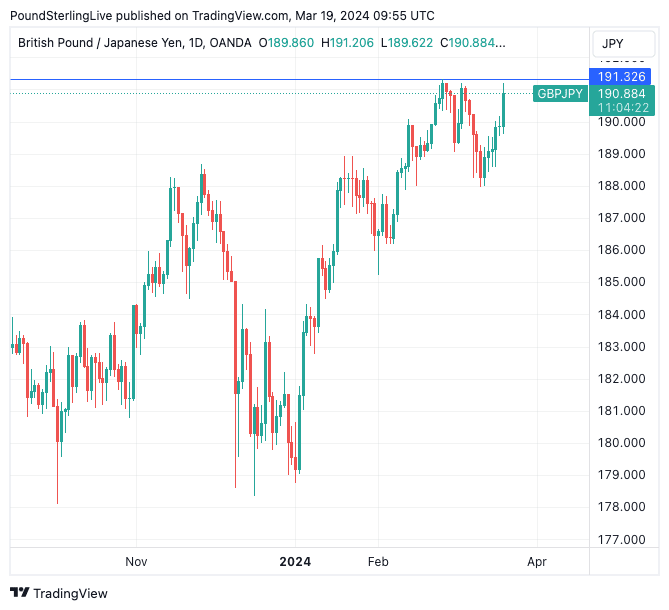Why the Yen Fell Following the Bank of Japan's Interest Rate Hike, and Why it Will Recover
- Written by: Gary Howes
-

Above: File image of Bank of Japan Governor Ueda. © European Central Bank, reproduced under CC licensing
Why did the Japanese Yen fall after the Bank of Japan raised interest rates and ended its policy of buying government bonds, and can it recover?
Finally, the Bank of Japan has taken the plunge as it raises interest rates and exits its yield curve control policy (a form of quantitative easing that saw the Bank buy government bonds to keep yields under control).
The Bank said negative interest rates and quantitative easing policy had achieved the goal of achieving price stability at the 2.0% target, confirming the Bank believes Japan has exited a multi-year deflationary period.
It raised the new range for its policy rate to 0-0.1%, ended Yield Curve Control and stopped buying ETFs.
Following the decision, the Yen fell: the Pound to Yen exchange rate rose 0.60% to 191, the Dollar to Yen rate rose 0.80% to 150.34 and the Euro to Yen rate rose 0.72% to 163.33.
The Yen's weakness runs counter to the theory book that says the tightening of monetary policy via interest rate hikes should boost domestic yields and support the currency.
An analysis from Danske Bank explains the currency market's reaction is down to three reasons:
1) the market was positioned for this owing to months of speculation and hints, suggesting the financial market had already discounted the decision
2) some anticipation that this was a one-and-done move
3) the recent rise in global interest rates matters more than the small tweak the BOJ presented this morning.
"Given the current outlook for economic activity and prices, the Bank anticipates that accommodative financial conditions will be maintained for the time being," said the Bank in a statement.
Above: Dollar-Yen is close to multi-year highs following the BoJ decision.
Although the Bank of Japan ended its Yield Curve Control programme and ETF purchases, it said it would continue to target long-term Japanese bonds, meaning it is still effectively undertaking some form of quantitative easing.
In short, the Bank of Japan remains a 'dovish' central bank in comparison to its peers while Japan still commands ultra-low bond yields.
Japanese policy is unlikely to do any heavy lifting for the Yen. Instead, for the Yen to rally, the onus falls on other central banks to cut interest rates and close the yield gap with Japan.
That is a possibility from mid-year onwards.
The Yen's reaction also reflects no formal declaration by the central bank of the end of deflation in Japan. Governor Ueda did however say in the press conference that the “unprecedented easing has ended”.
"There has been a classic ‘buy-the-rumour / sell-the-fact’ market reaction to the decisions made today with USD/JPY back close to levels where intervention has taken place previously and with JGB yields modestly lower on the day," says Derek Halpenny, Head of Research for Global Markets EMEA at MUFG.
That said, MUFG, which is one of Japan's largest banks, thinks the Yen will recover.
"We are unconvinced that this initial market reaction signals what’s to come. The reality is that the guidance has likely been left purposely vague to provide flexibility. However, Governor Ueda was also clear that upside inflation risks and/or stronger economic data wold be enough to indicate additional rate hikes going forward. The BoJ is now essentially data-dependent which is a big change in the BoJ reaction function and opens up the scope for greater FX volatility that should discourage a further build-up of yen carry positions at these weaker yen levels," says Halpenny.








